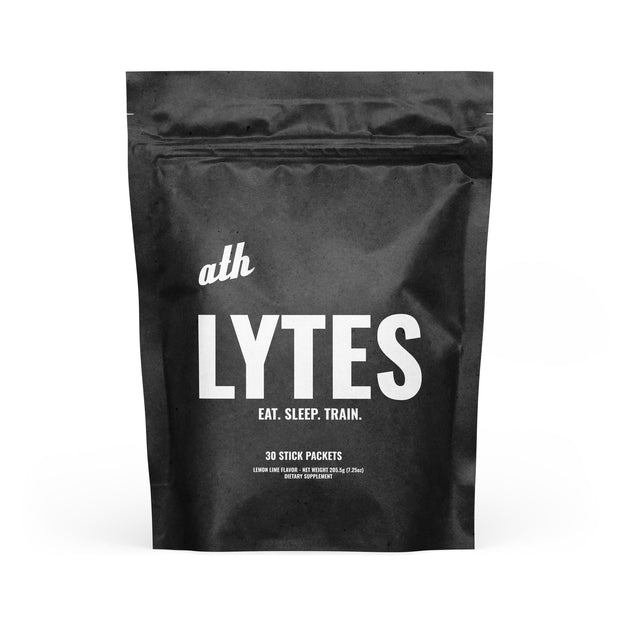Our editorial team is made up of subject matter experts with extensive, real-world clinical experience who are highly trained in evaluating clinical research. Read more about our editorial policy here.
Types of Salt: Minimally to Most Processed

Salt, made of sodium chloride, is one of the most abundant minerals on Earth and in our bodies.
We need it for communication between nerves, muscle contraction and relaxation, and to maintain hydration.
However, not all salt is the same.
Sure they all contain sodium chloride - but there are big differences amongst different types of salt including their nutrient profile depending on where it's sourced, how it's derived, and how much processing it goes through.
We'll cover it all so keep reading...
KEY TAKEAWAYS
- Yes, all salt contains sodium chloride, HOWEVER all salt is not sodium chloride (more on this below)
- Different salts have different nutrient profiles based on their origins and processing
- Table salt is the most processed salt with additives like anti-caking agents added to it.
- Pink Himalayan salt, sea salts, and celtic salts are less processed and contain trace minerals.
As an electrolyte, sodium, along with chloride and potassium plays a major role in helping maintain adequate hydration levels by controlling the amount of water that moves in and out of our cells.
The Dietary Guidelines for Americans recommends limiting sodium intake to less than 2,300 milligrams per day which is the equivalent of about one teaspoon of table salt per day.
Yet, this isn't an optimal amount for active lifestyles.
Athletes, especially endurance athletes or those training in the heat, need to replenish their sodium stores and electrolytes to prevent dehydration and other factors that occur with electrolyte imbalances.
This is where electrolyte supplements come in, however different brands use different types of salt and these differences come down to where they are harvested, how they are processed, it's mineral makeup and more.
PROPERTIES OF SALT
Salt comes from the mineral halite. It is one of the most important minerals to human health and has been used as a seasoning and preservative for thousands of years.
It's found in abundance in seawater and processed by evaporation.
Rock salt, on the other hand, is mined or quarried from salt beds that were once under ancient oceans.
Salt can come in a variety of textures. Some salts are ground down to fine particles, like table salt, while others are sold as flake salt or chunks like Himalayan pink salt or sea salt. Because the crystal sizes vary, so does their sodium content.
One teaspoon of table salt contains 2,300 milligrams (mg) of sodium, while the same amount of coarse sea salt contains just 1,560 mg.
DIFFERENT TYPES OF SALT
-
Pink Himalayan Salt
-
Table Salt
-
Sea Salt
- Celtic Salt
PINK HIMALAYAN SALT
QUALITIES
- Fine-course, chunky
- Minimally processed
- Pink-pink brown in color
- Mild earthy flavor
NUTRIENTS
Contains 84 trace minerals.
Compared to table salt, pink Himalayan salt has higher amounts of potassium, magnesium, and iron - and lowers amounts of sodium.
PURITY AND SOURCING
Sourced from the Salt Range, pink Himalayan salt is harvested from ancient, over 500 million years ago, sea salt deposits found deep in the mountain range.
These seas were not exposed to modern day contaminants and toxins and so, the salt is revered as the purest and most natural when compared to other salts.
Because of its purity, minimal processing is needed to take it from its raw form to the consumer - making it slightly higher in mineral content and a fan favorite.
IN SUPPLEMENTS
Pink Himalayan salt is typically used by brands that have a more natural, less processed approach. Since it's more expensive than table salt, it's not as common and can be harder to find.
TABLE SALT (AKA SODIUM CHLORIDE)
QUALITIES
- Crystallized
- Highly processed
- White
- Strong, slightly bitter flavor
NUTRIENTS
Table salt is composed of sodium and chloride and is processed to remove additional minerals.
Because it is so finely ground, it contains more sodium than coarser salts.
Iodine may be added to help prevent iodine deficiency which was common, especially in landlocked states due to a lack of iodine prior to this fortification.
HARVESTING AND MANUFACTURING
Table salt is harvested from seawater and salt mines around the world. After harvesting, it’s processed to remove other minerals or potential contaminants.
PURITY AND SOURCING
Table salt is the most heavily processed salt which helps remove impurities and can also remove trace minerals. Iodine is often added and contains an anti-caking agent to prevent the product from clumping together.
IN SUPPLEMENTS
Table salt is the most common form that you'll see in supplements for a few reasons.
- Price - it's the cheapest and most economical form for most brands.
- Stability - because the salt is extremely processed during manufacturing, additives are actually added back to it to dry it out and keep it from clumping, leaving the product more shelf stable than those that use more natural versions. Examples of these additives include silicon dioxide, yellow prussiate of soda, etc.
SEA SALT
QUALITIES
- Course
- White, red, or redish brown in color
- Minimally processed
- Typically used in seasonings
NUTRIENTS
Minerals that are commonly found in the ocean will also make their way into sea salt. It may contain small amounts of potassium, zinc, and iron depending on where it is harvested. Fine sea salt is a bit lower in sodium than regular table salt.
PURITY AND SOURCING
Because this salt comes from the sea and is not heavily processed, it may have contaminants that are found in modern day seas.
HARVESTING AND MANUFACTURING
Sea salt is collected from ocean water and harvested by evaporation.
Hawaiian sea salt completes the final round of drying in lava, giving it a red or black hue. Alternatively, sometimes this salt is coated in activated charcoal, giving it the black appearance.
IN SUPPLEMENTS
Mostly used for seasoning and finishing, you'll rarely find sea salt in supplements.
CELTIC SALT
QUALITIES
- Course
- Greyish in color
- "Wet" salt
Celtic sea salt is a variety of sea salt that traditionally comes from oceans off the coast of France.
There are many forms of Celtic sea salt offering a variety of textures to meet consumer needs. This is a moist salt that has a softer texture, making it an ideal finishing salt.
NUTRIENTS
82 trace minerals (in low amounts)
Celtic salt contains trace amounts of calcium, magnesium, and potassium. Coarser varieties will naturally contain less sodium chloride.
HARVESTING AND MANUFACTURING
Celtic sea salt was traditionally harvested in oceans off the coast of France and maybe referred to as Fleur de sel. However, in present day, celtic salt is harvested from modern day seas - meaning modern day contaminants like mercury.
PURITY AND SOURCING
Celtic sea salt is minimally processed, sometimes by hand, and therefore, is a very clean product.
IN SUPPLEMENTS
Known as a wet salt, celtic salt is not ideal in supplements as it'll cause moisture buildup and the hardening of powders.
Brands that do choose to use celtic salt in their formulas will most likely contain additives that help to draw the moisture out and prevent clumping.
WHY WE CHOOSE HIMALAYAN PINK SALT
Himalayan pink salt tops our list for best salts thanks to its minimal processing, being free of additives, and its slightly higher mineral content including calcium, iron, potassium, and zinc. It’s important to keep in mind that all salts are high in sodium which can cause hypertension, heart disease, and stroke if taken in excess.
FAQS
IS ALL SALT THE SAME?
Short answer = no
All salt has sodium chloride, but they're not all the same.
Depending on where their derived and how they're processed, differences include mineral content, contaminant exposure, and more.
ISN'T ALL SALT SODIUM CHLORIDE?
All salt comes from sodium and chloride - but it's untrue to say that all is sodium chloride.
If you're scratching your head, we get it.
Table salt is sodium chloride
We can say this because table salt is highly refined and all trace minerals are removed leaving behind only the sodium and chloride.
Again - table salt is ONLY sodium and chloride.
Table salt = sodium + chloride
Pink Himalayan salt is not sodium chloride
We say this because...pink Himalayan salt contains sodium chloride and 84 trace minerals.
Pink Himalayan salt = sodium + chloride + trace minerals (magnesium, chloride, potassium, calcium, etc.)
When you see pink Himalayan salt listed as an ingredient - this means that there will be sodium and chloride present in the product and they are both derived from the pink Himalayan salt. On top of that, you may also see the trace minerals listed on the supplement facts or nutrition label - such as Magnesium (from Pink Himalayan Salt) etc.
DOES PINK HIMALAYAN SALT HAVE RUST? WHY IS IT PINK?
No, there is no rust in pink Himalayan salt. The pinkish-brown hue comes from its trace mineral content.
TL;DR
Table salt = highly processed with additives to prevent caking.
Sea salt = minimally processed and mostly used in seasonings or as a finishing salt.
Celtic salt = minimally processed with 82 trace minerals and is typically referred to a "wet" salt which makes it difficult to use in supplements.
Pink Himalayan salt = minimally processed with 84 trace minerals and a mild flavor - making it our choice to use in supplements.



